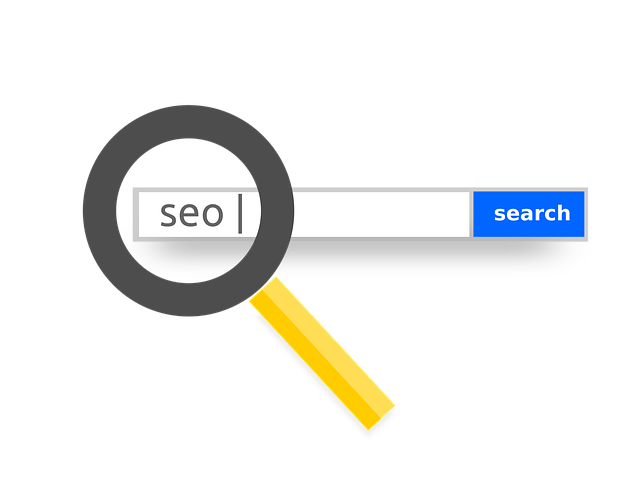
On-page SEO has the capability to drive numerous fresh visitors, as well as customers, directly to your website.
Moreover, you have complete control over on-page SEO, allowing you to determine the subject and/or objective of each page. You have the authority to select the specific target audience for each page as well as the target keywords and phrases that you wish to prioritize.
This can be both intimidating and empowering. If you don’t know where to begin, we have created this on-page SEO checklist to assist you.
What is on-page SEO?
On-page SEO, also known as on-site SEO, involves optimizing different front-end and back-end elements of your website to ensure it achieves a high ranking in search engines and attracts fresh visitors. The components of on-page SEO encompass content elements, site architecture elements, and HTML elements.
Google ranks your website based on three main factors, namely on-page SEO, off-page SEO, and technical SEO, following a step-by-step thinking process.
- On-page SEO refers to the page elements that enable search engines to crawl and index a page.
- Off-page SEO refers to social sharing, external linking, and more.
- Technical SEO refers to all the SEO elements not included in on-page and off-page practices, such as structured data, site speed, and mobile readiness — the more technical parts of SEO.
Why is on-page SEO important?
On-page SEO is crucial because it communicates to Google various details concerning your website and demonstrates how you deliver value to visitors and customers. It ensures that your site is optimized for both human users and search engine bots.
In order to rank and attract new traffic, it is not sufficient to just create and publish your website. You must also optimize it for Google and other search engines.
The reason why on-page SEO is called “on-page” is because the adjustments and modifications made to enhance your website can be observed by visitors directly on your page, unlike off-page and technical SEO elements which are not always apparent.
On-page SEO is entirely within your control, making it crucial to perform it accurately. Now, let’s examine the components of on-page SEO.
The three main categories encompass all on-page SEO elements.
- Content Elements
- HTML Elements
- Site Architecture Elements
How to do on-page SEO
Align with search intent
By thinking step by step, you can rephrase the given text as follows: Search intent refers to the purpose behind a search query. It enables you to comprehend what users are seeking and what your content should provide.
To determine search intent, examine the highest-ranked results on Google and identify the three Cs of search intent:
- Content type – What is the dominating type of content? Is it a blog post, product page, video, or something else?
- Content format – Some common formats include how-to guides, list posts, reviews, comparisons, etc.
- Content angle – The unique selling point of the top-ranking points, e.g., “best,” “cheapest,” “for beginners,” etc. Provides insight into what searchers value in a particular search.
Most of the highest-ranking results for “avocado seed” consist of blog posts that function as step-by-step guides for planting the seed. The inclusion of terms such as “easy” and “simple” suggests that individuals searching for these keywords are novices seeking uncomplicated guidance.
Cover your topic in full
If your content addresses relevant subtopics, it is more likely to exceed the expectations of searchers, leading to a higher chance of ranking for relevant keywords and obtaining increased traffic.
If you are searching for clues, it is beneficial to start by examining top-ranking pages. By manually analyzing these pages, you can identify similarities like headings, frequently asked questions (FAQs), visual aids, and the depth of information provided on the subject.
When approaching the task, you can utilize tools such as Ahrefs, an SEO tool, to identify the keywords that appear in the content of high-ranking web pages. Among these keywords, you may find suitable subtopics or points to incorporate into your own content.
Here are the instructions:
- Put your main keyword into Ahrefs’ Keywords Explorer
- Scroll to the SERP overview and select a few top-ranking pages
- Click Open in and select Content gap
When you think methodically, you will observe a compilation of frequently used keywords which serve as indications of what individuals are searching for.
Make your content unique
In order to achieve a high ranking, it is important to refrain from simply replicating existing pages. Instead, it is necessary to introduce fresh content to the search engine results pages (SERPs).
By thinking step by step, you can rephrase the text below without adding or removing any information, while still maintaining the same meaning: This improves the likelihood of attracting links, ultimately aiding in improving your page rank.
“You will need to be innovative, as the level of uniqueness is determined by the existing content on the SERPs.”
- Original research – New knowledge, insights, or discoveries. For example, an industry survey with a company’s customers.
- Unique view or take on a topic – Fresh perspectives, challenges to conventional thinking, strong opinions. For example, SEO tips from a longtime industry expert.
- A faster or easier way to solve a given problem or achieve something – For example, tips on becoming rich before 30.
- A helpful, free resource – For example, a template, cheat sheet, etc.
If you want to gather ideas about the content that people tend to associate with a particular subject, you can utilize Ahrefs for inspiration.
To rephrase the text while maintaining the same meaning, consider the following: “Enter your keyword into Keywords Explorer, then navigate to the SERP overview and select the backlink number associated with a page that has numerous referring domains.”
Create a visual hierarchy by using H1–H6 tags
The use of header tags (H1, H2, etc.) assists Google in comprehending the content found on your webpages.
Moreover, they assist in enhancing the comprehension of your material and enhancing its readability by readers.
When it comes to the H1 tag, the recommended practice is to have only one H1 tag per page that corresponds with the page title. To identify pages that have missing or empty H1 tags, you can perform a site crawl using Ahrefs’ Site Audit tool and access the Content report. This can be done at no cost by using an Ahrefs Webmaster Tools (AWT) account.
When it comes to H2 to H6 tags, utilize them solely for the subheadings of your content.
Write a compelling title tag
When thinking about it step by step, you should aim to create captivating title tags since they are frequently regarded as the primary factor in determining which result to select. Here are some suggestions to help you achieve this.
- Keep them short – Under 70 characters is best to avoid truncation.
- Match search intent – Tell searchers you have what they want.
- Be descriptive – Don’t be vague or generic.
- Don’t clickbait – Make sure they align with your content.
- Include the keyword – Use a close variation if it makes more sense.
- Include the year – For topics that demand freshness.
Write a compelling meta description
Although meta descriptions do not directly impact Google rankings, they can enhance click-through rates and website traffic. This is because Google frequently utilizes them to provide a descriptive snippet in search results. To effectively craft meta descriptions, consider the following suggestions:
- Keep them short – Under 160 characters is best to avoid truncation.
- Expand on the title tag – Include USPs that you couldn’t fit there.
- Match search intent – Double down on what searchers want.
- Use an active voice – Address the searcher directly.
- Include your keyword – Google often bolds this in the results.




